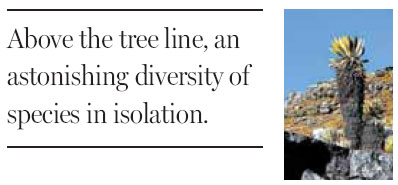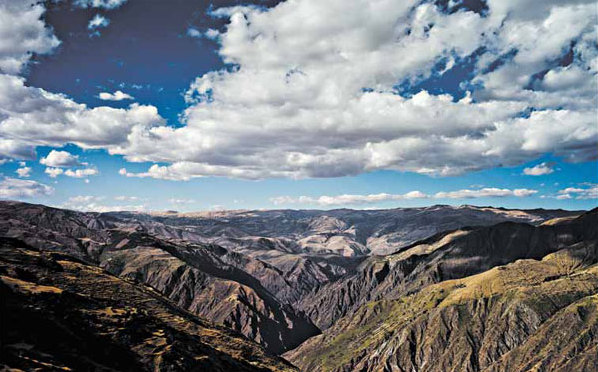In habitats in the Andes, evolution is fast
Updated: 2013-11-24 07:04
By Carl Zimmer(The New York Times)
|
|||||||||
In 1799 the great naturalist Alexander von Humboldt and his companions set out from Caracas, Venezuela, to climb the Andes. They struggled up a mountainside enveloped in mist so thick they had to clamber over rocks by hand. When the fog cleared, von Humboldt was left stunned by the view. Vast grasslands stretched all around him, home to an astonishing number of different trees, shrubs and flowers.
"Nowhere, perhaps, can be found collected together, in so small a space, productions so beautiful and so remarkable in regard to the geography of plants," he later wrote.
Von Humboldt had stumbled into a remarkable ecosystem, known as a Paramo. Paramos blanket the Andes in Venezuela, Ecuador and Colombia, growing at altitudes 2,800 to 4,500 meters above sea level.
|
In remarkable Andean ecosystems known as Paramos, described as "islands in a sea of forest," researchers have discovered plants in found nowhere else on Earth. Photographs by Santiago Madrinan Restrepo |

"They're like islands in a sea of forest," said Santiago Madrinan, an expert on Paramos at the University of the Andes in Colombia. All told, Paramos cover about 35,000 square kilometers. In that small space, Dr. Madrinan and other researchers have found 3,431 species of vascular plants, most of them found nowhere else on Earth. The Paramos are home to strange variations on familiar forms, such as a daisy that grows as tall as trees.
But, according to a new study, the Paramos are even more remarkable than von Humboldt could have realized. They are the fastest evolving places on the planet.
Scientists have long known that in certain spots, evolution runs faster than normal. The Galapagos Islands, for example, are home to some 13 species of Darwin's finches, which all evolved from a single group of birds that originally colonized them. The archipelago is just a few million years old, however, which means that all their diversity has evolved in a geologically short period of time.
In recent years, scientists have identified other regions where evolution is running fast. To measure its speed, researchers have looked at the DNA of species living in each place. The longer it has been since two species diverged from a common ancestor, the more time each lineage has had to accumulate mutations. Young species have relatively few mutations.
Dr. Madrinan has studied Paramos for over a decade, and he suspects that evolution is running fast in them as well. "I don't know if it was a hunch or what it was, but when you study the Paramos, it's a marvelous place," he said.
The geology also gave support to his hunch. The Andes started forming tens of millions of years ago, but it wasn't until 2.5 million years ago that the northern Andes rose above the elevation where trees can survive. Only then could all the diversity of the Paramos emerge.
To calculate the speed of evolution in the Paramos, Dr. Madrinan and his colleagues surveyed 13 different lineages of plants that grow there. They estimated the rate at which species had split from each other in each lineage, and then combined those estimates into a single average. The scientists then looked at data on plants that grow in other fast-evolving places, such as Hawaii and the Mediterranean coast.
The results surpassed Dr. Madrinan's suspicions. Of the eight places he and his colleagues compared, the Paramos are evolving the fastest of all.
Other experts on evolutionary rates are intrigued by the new study, which was published in Frontiers in Genetics. "Of course these results are still very preliminary," said Luis Valente of the University of Potsdam, noting that scientists have sampled only a few groups of plants from each spot.
But Dr. Valente thought the study persuasively demonstrates that the Paramos are a special place. "This may be a region where evolution is proceeding at a very fast pace, and where many new species may still be in the process of being formed," he said.
Dr. Madrinan suspects the peculiar climate of the Paramos is responsible for their fast evolution. Because the grasslands are at the equator, they are bathed in sunshine year-round. But to take advantage of that ample energy, the plants also have to contend with cold temperatures and harsh ultraviolet rays, not to mention weather that can turn suddenly.. "You may be in total mist and then half an hour later you are in total sunshine," Dr. Madrinan said.
Dr. Madrinan and others are now exploring the history of the plants to see if they can explain their remarkable speed. "Paramos are the new laboratory to study evolution happening at incredible rates," he said.
The New York Times
(China Daily 11/24/2013 page11)
